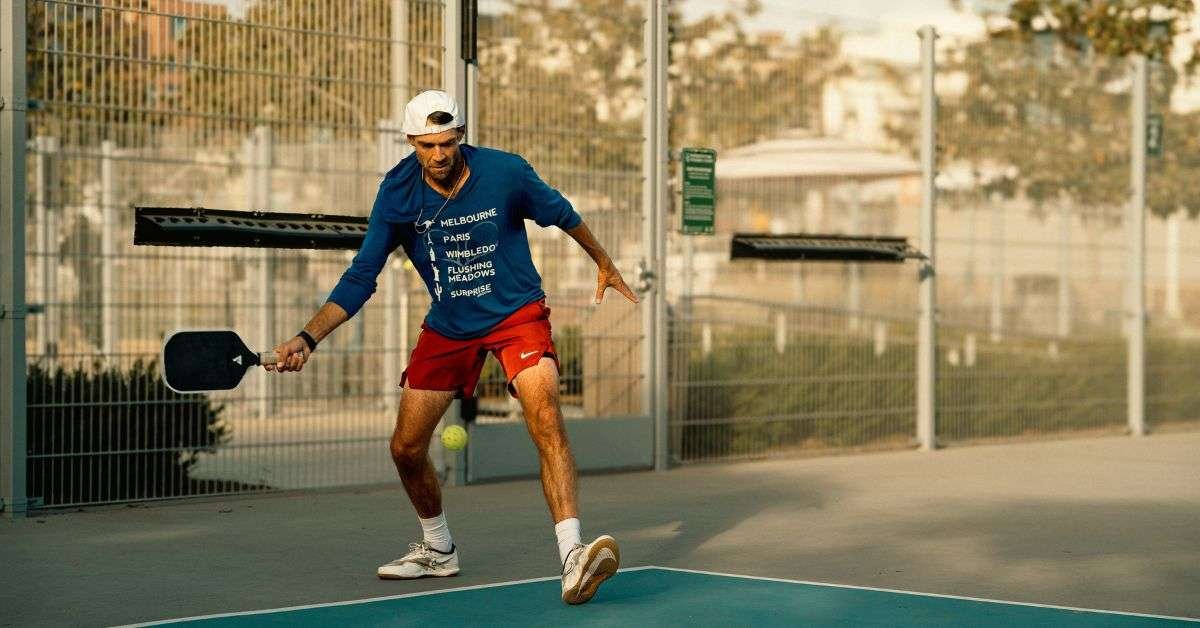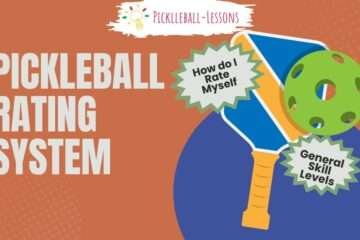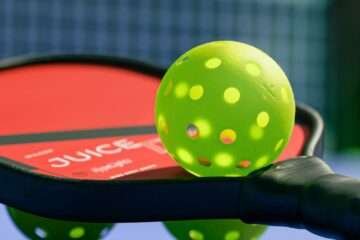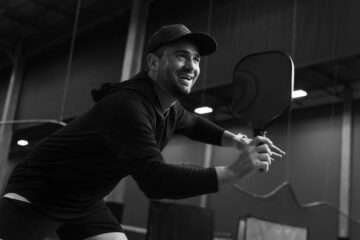The third shot drop remains one of the most misunderstood — and most essential — skills in pickleball. If you’ve struggled with it, or even considered giving up on it altogether, you’re not alone. But before you toss it aside in favor of drives or lobs, it’s worth understanding why the drop still plays a crucial role, especially for players aiming to break past the 3.0 or 3.5 level.
What Exactly Is the Third Shot Drop?
The third shot marks the start of your offensive Pickleball strategy after a return of serve. You can drive it, drop it, lob it, or go with a hybrid “Drip” shot — a topspin-heavy blend of a drive and a drop.
But the classic third shot drop is a soft, arcing shot that barely clears the net and lands low in your opponent’s kitchen. Its purpose isn’t to win the point outright — it’s to buy time, take away attack angles, and give you space to move in.
When executed well, it neutralizes opponents already stationed at the kitchen line and sets up your team for success.
My Early Struggles With the Drop Shot
When I first picked up a paddle, there weren’t any instructors or organized clinics in my area. Just a few shared courts and an enthusiastic group of players who showed up for open play. Back then, if you wanted to know how to start playing pickleball, you had to figure it out on your own — by watching others, asking questions, and relying on good old-fashioned trial and error.
Back then, I didn’t fully understand the strategy behind the Non-Volley Zone. Why were advanced players hitting these slow, high-arcing shots that just barely made it over the net? It didn’t look powerful or impressive—until I noticed something: players who hit effective drops were the ones who got to the kitchen line first. And when they did, they dictated the rally. It wasn’t about brute strength. It was about position and control.
Naturally, I tried to add the drop to my game. But it didn’t go well. If the shot was too high or too deep, it got crushed. Partners got frustrated. I lost confidence. Eventually, I gave up and went back to blasting drives or lobbing occasionally. It felt safer, but it didn’t help me progress.
Why So Many Players Give Up
This cycle—attempt the drop, fail, and abandon it—is incredibly common, even among players with experience. There are a few reasons why:
- It’s difficult at first. The margin for error is slim, and mishits are frustrating.
- Poor follow-up. Even a great drop doesn’t work if you stay back or your partner doesn’t move up.
- Lack of trust. Many partners don’t believe in the drop, especially if they’ve seen it fail.
- The pace feels off. Drops seem slow and risky compared to driving the ball.
- Timing issues. Players either freeze after hitting a good drop or charge forward after a bad one, getting caught in no man’s land.
Some players give up entirely and rely on lobs or deep drives. While those can work situationally, they’re not reliable tools for consistent advancement—especially against stronger opponents.
Why the Third Shot Drop Still Matters in 2025
There’s been plenty of debate lately about the future of the drop shot. Newer strategies like the “Drip” (a hybrid between a drop and a topspin drive) or drive-then-reset combinations are gaining traction at the higher levels of the game. These strategies have their place—particularly in fast-paced, aggressive play.
But for players aiming to break into the 3.5 level and beyond, the third shot drop remains a foundational tool. It’s not just tradition—it’s a proven strategy for neutralizing opponents who are already set up at the kitchen and for transitioning from defense to offense.
When to Drop — And When Not To
Many players assume a deep return of serve means you should drive. But that’s often a great opportunity for a drop. A deep, loopy return gives you time and space to hit a soft, low shot into the kitchen. The slower pace forces your opponent to reach and reset.
That said, the drive has its place. If your opponent hits a short return or fails to move in quickly, a third shot drive puts immediate pressure on them and can set you up for an easier advance.
The key is knowing when to mix it up. The third shot drop shouldn’t be your only tool — but it should definitely be part of your toolbox.
Even Imperfect Drops Can Be Effective
Here’s a common myth: unless the drop is perfect, it’s worthless. That’s just not true.
Even a mediocre drop — especially one that lands to the backhand or low in the kitchen — can force a weak reply. Unlike drives, drops require your opponent to create their own pace and positioning, which opens the door for mistakes.
The goal isn’t perfection — it’s progress. If your drop makes the opponent hesitate, reach, or dink, you’ve won the exchange.
How to Use It More Effectively
- Decide early. Commit to the drop before you hit, and don’t hesitate.
- Pick your target. Aim for the middle when learning; as your accuracy improves, try hitting to the backhand side or the opponent in motion.
- Advance wisely. A good drop buys you time to move forward. But if your drop is too high or fast, don’t charge in blindly. Move up a step, split-step, and be ready for a fifth shot reset.
- Read your opponent. If they hang back or look unsteady, mix in a drive or Drip. The element of surprise adds pressure.
Transitioning to the Net
One of the biggest benefits of a solid drop is that it lets you move to the kitchen line without getting punished. That’s critical — because until both players are up at the net, you’re at a strategic disadvantage.
Too many players hit a good drop, then hesitate or stay back. Others rush in after a weak one and get passed. The key is reading your shot: if it’s low and soft, move in. If it’s high, stay balanced and prepare for a reset.
Even when a good opponent returns a dink, that’s still a win. It means you’ve neutralized their attacking position and shifted into the soft game.
Don’t Give Up — Drill It Instead
If you’ve tried the third shot drop and felt like quitting, don’t. That frustration is normal. Many players — even experienced ones — avoid the drop because of early failures. But those who stick with it eventually unlock one of the most powerful tools in the game.
Here’s how to improve it:
- Drill before games. Just 15–20 focused reps can improve your touch dramatically.
- Work with a partner. Practice drop–advance–reset sequences to simulate real play.
- Focus on feel. Power isn’t the goal — control is.
- Track your progress. Celebrate small wins — a better arc, a more accurate target, or improved footwork.
Final Thoughts: Make the Drop Part of Your Game
If you want to climb past the 3.0 or 3.5 level, you can’t avoid the third shot drop. Yes, the game is evolving — but the fundamentals still matter. Drive when it makes sense, experiment with the Drip shot, but don’t ditch the drop.
Stick with it long enough, and the drop shot will stop feeling like a gamble. It will become second nature — just another smart option in your arsenal.
And when it finally clicks? That’s one of the best feelings in all of pickleball.




